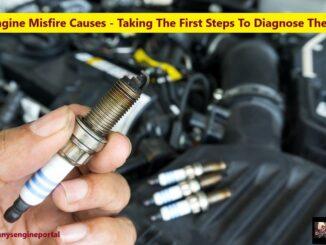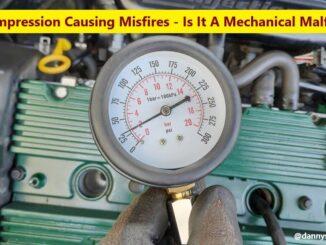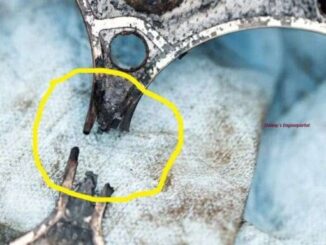
Doing a cylinder leak down test, can tell you more about your engine than you think.
Also, it can spot issues in specific areas, that other tests will not.
So, a cylinder leak down test, can tell you if the loss of compression, is due to things like, worn rings, burned or stuck open valves (intake or exhaust) or a leaking head gasket.
A cylinder leak down test or cylinder leakage test, is actually similar to a compression test:
- So, a compression test measures, how well your engine’s cylinders are sealing.
- But, a Cylinder Leak Down Test, takes it to the next level and measures, cylinder pressure loss.
Although a compression test, won’t give you a detailed picture of your engine’s health, it should be done first.
A compression test is a quick and easy way, to show if a catastrophic problem exists, and on which cylinder(s). So, you may have found bad cylinders, but the only remaining question is why.
This Is Where The Cylinder Leak Down Test Takes Over
Here we can narrow down, where the problem may actually exist including mechanical problems:
- A burnt or bent intake valve
- A burnt or bent exhaust valve
- Broken piston ring?
- Blown head gasket? (this includes between cylinders)
- A cracked cylinder wall
- A cracked cylinder head
But, What If You Don’t Own A Tester
A cylinder leak down test, takes more time to perform. But, it can give you a more accurate and detailed picture, of the engine’s overall health:
- First, a cylinder leak down test requires, the removal of all the spark plugs.
- Next, use the screw in hose from your compression tester, and screw it into a spark plug hole.
- Compressed air (80 to 90 psi), is then fed into the cylinder.
- The crankshaft is then turned, so that each piston is at top dead center.
- Most people start with cylinder number one, and follow the engine’s firing order.
The neat thing about a cylinder leak down test (as opposed to a compression test) is that, it’s faster and easier to figure out, where the pressure is going.
Next, Listening Where The Air Is Escaping From, Can Isolate The Problem:
- Intake valve: Air whistling out of the intake, carburetor or throttle body indicates, a leak at the intake valve.
- Exhaust valve: Air heard hissing out of the exhaust pipe, turbocharger or exhaust manifold means, an exhaust valve leak.
- Piston rings: Whistling or hissing out of the (PCV) valve, oil filler cap hole or dipstick tube. So, the air is pushing past the rings. Suspect ring or cylinder wall wear.
- Head gasket leak: Air bubbles in engine coolant seen at the radiator filler cap. This could mean there is air escaping into the coolant, past the head gasket.
- Cracked cylinder or cylinder head: Bubbles in coolant or coolant, being pushed up out of the radiator neck. Also indicates cracks in the cylinder head, or cylinder walls.
Cylinder Leak Down Test Findings – What Are The Results Telling You
A cylinder leak down test, can also be used in conjunction with a compression test. Consequently, to diagnose other kinds of problems.
A cylinder that has low compression, but minimal leakage, usually has a valve train problem. Such as a worn cam lobe, broken valve spring, collapsed lifter, bent push rod, etc. And, can shown up as a mechanical engine misfire.
Furthermore, if all the cylinders have low compression but show minimal leakage, the most likely cause is, wrong valve timing. The timing belt or chain, may be off a notch or two.
So, compression is good and leakage is minimal. But, a cylinder is misfiring or shows up weak in a power balance test. Then, it indicates a fuel delivery (bad injector) or ignition problem (fouled spark plug or bad plug wire).
Doing A Cylinder Leak Down Test, With A Proper Tester
There are tons of different testers out there, that all do basically the same thing. Sometimes you can rent the tool from your local auto parts store. If you purchase a new one, they all come with instructions. Doing so will give you more accurate results.
In Summary: Cylinder Leak Down Test
So, both tools are designed, to measure cylinder pressure, in order to highlight and diagnose engine problems. A compression tester is a stand alone tool, that relies on the engine’s compression, to build pressure in the cylinder. Finally, a cylinder leak down tester, relies on an external supply of compressed air.
Thank You!




